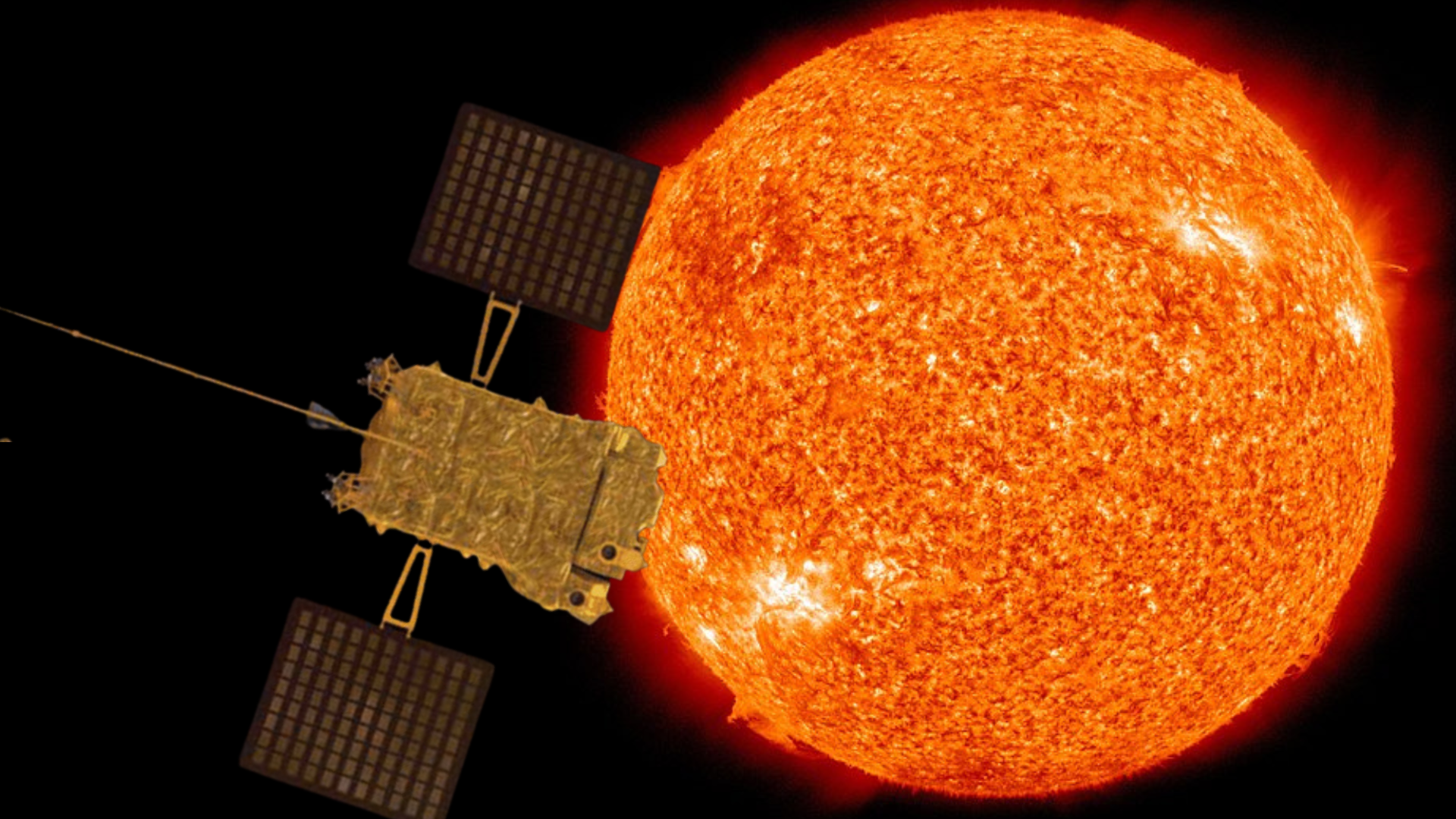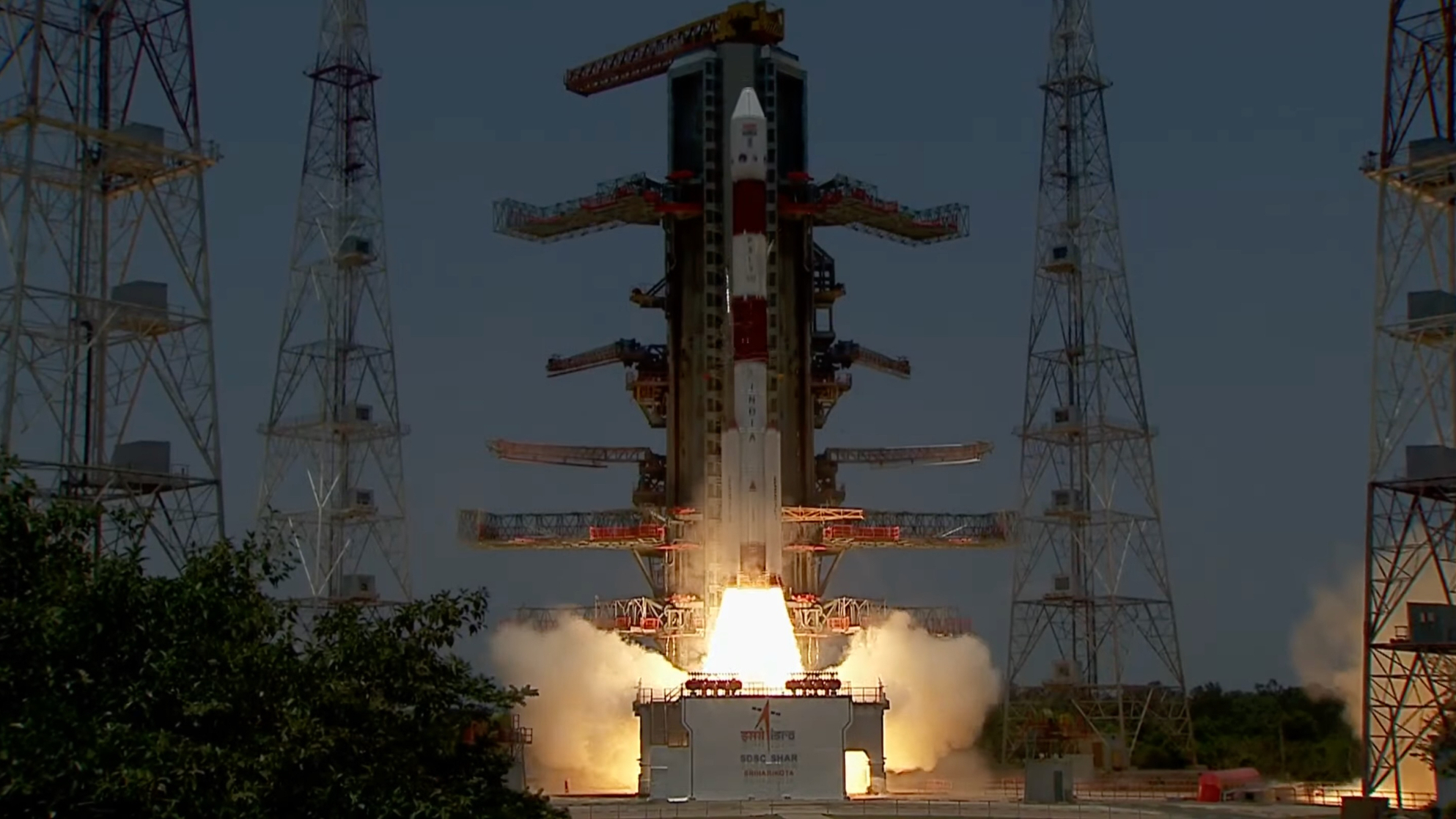What is India's Aditya-L1 sun mission?
Indian Space Research Organisation's Aditya-L1 mission is now orbiting Earth, studying the sun and attempting to solve pressing solar mysteries.

Aditya-L1 is a solar observatory operated by the Indian Space Research Organisation (ISRO).
The solar observatory will monitor the sun with seven specially designed distinct scientific payloads, five of which have been developed by the ISRO. It will do so from its position at a gravitationally stable point in the Earth-sun system called Lagrange point 1 — around 1 million miles (1.5 million kilometers) from Earth — where a spacecraft can remain stable in relation to both bodies. ISRO describes the mission as a "satellite dedicated to the comprehensive study of the sun." The L1 suffix in the mission's name refers to this location, while "Aditya" means "the sun" in Sanskrit.
The Aditya-L1 spacecraft will not come any closer to the sun than this, studying our star from this distance, around 1% of the total space between the Earth and the sun, for the duration of its mission, which is estimated to be around 5.2 years. Placement at L1 will allow the spacecraft a view of the sun that is uninterrupted by eclipses or occultations, according to ISRO.
Aditya-L1 will investigate the sun's atmosphere, the corona, and its surface, the photosphere. The data it collects could help solve lingering solar mysteries, such as how the corona is considerably hotter than the photosphere despite being around 1,000 miles (1,609 km) further away from the sun's main source of heat, the nuclear fusion that takes place at its core.
The proximity to Earth will also allow the mission to study Earth's magnetic field, the magnetosphere, and how it reacts to charged particles that stream towards Earth from the sun in solar winds and in coronal mass ejections (CMEs). The Indian mission will also study the space environment around L1.
Related: ISRO: The Indian Space Research Organization
When did Aditya-L1 launch?
The Aditya-L1 spacecraft blasted off from Satish Dhawan Space Centre in Sriharikota, an island off the coast of the Bay of Bengal, at 2:20 a.m. EDT (0620 GMT, 11:50 local India time) on Sept. 2, 2023, atop a Polar Satellite Launch Vehicle (PSLV).
Breaking space news, the latest updates on rocket launches, skywatching events and more!
Aditya-L1 was deployed into low-Earth orbit by the PSLV around 63 minutes after launch, as planned. After this, it underwent a Trans-Lagrangian1 insertion maneuver. The journey to L1 after launch is estimated to take around 110 days, over which time five further maneuvers will be performed to give the spacecraft the velocity needed to reach this gravitationally stable point.
When arriving at L1, Aditya-L1 will execute a further maneuver to "bind" itself to an orbit around the location. The orbit established around 127 days after launch will be irregularly shaped and will be in a plane approximately perpendicular to a line joining the sun and Earth, according to the ISRO.
The successful launch of Aditya-L1 marks the culmination of over 15 years of planning. The mission began life in January 2008 as a concept from the Advisory Committee for Space Sciences (ADCOS), as a small 400 kg (880 lb) satellite that would remain in a low-Earth orbit. The scale of the mission grew significantly over a decade and a half of strategizing, and it was given a new name — "Aditya-L1" — in July 2019 to reflect this growth.
What will Aditya-L1 do?
The Aditya-L1 spacecraft had a launch mass of 3,252 pounds (1,475 kilograms). It is a cube-shaped satellite with a honeycomb sandwich structure. Its main body has dimensions of 2.9 feet x 2.9 feet x 2 feet (89 centimeters x 89 cm x 61.5 cm), according to the European Space Agency.
The Aditya-L1 starts its journey in a folded configuration. When unfolded, the spacecraft will have two wings with two solar panels, each of which is 3.9 feet x 2.7 feet (120 cm x 81 cm). These will assist the spacecraft's lithium-ion battery to provide Aditya-L1 with power. The craft will monitor its position with a miniaturized GPS receiver, which provides the position, velocity and time data in real time.
The Aditya-L1 craft has a payload of 7 scientific instruments, each with distinct functions, which weigh around 538 pounds (244 kg) and will be carried on the spacecraft's top deck. The instruments of Aditya-L1 and their functions are:
Magnetometer (MAG)
Located on a boom on the sun-facing side of Aditya-L1, the magnetic sensor MAG developed by the Laboratory for Electro Optics Systems (LEOS) will measure the magnitude and direction of the interplanetary magnetic field around Earth. MAG will also examine events like CMEs, measuring their impact on the space environment immediately around Earth. It will also detect waves in solar plasma at L1.
Visible Emission Line Coronagraph (VELC)
VELC will make observations of the solar corona close to the limb of the sun. This will include measuring coronal magnetic fields and detecting CMEs and so-called "coronal loops" outflows of plasma emerging from the sun's upper atmosphere. The aim of this will be to uncover the mechanism that causes the corona to be heated to many times the temperature of the underlying photosphere.
High Energy L1 Orbiting X-ray Spectrometer (HEL1OS)
HEL1OS will concentrate on solar flares, outbursts of electromagnetic radiation from the sun, examining both thermal and non-thermal emissions that occur as flares evolve. It will also study pulsations of X-rays during solar flares to understand how these high-energy emissions are linked to mechanisms accelerating particles like electrons around the sun.
Solar Ultraviolet Imaging Telescope (SUIT)
Developed by the Inter University for Astronomy and Astrophysics, SUIT is an ultraviolet telescope that will image the solar disk. The aim of this will be to understand how energy is channeled from the photosphere to the corona. It will also examine the wavelengths at which solar flares radiate the most energy and how different phases of flares appear at different layers of the sun's atmosphere.
Solar Low Energy X-ray Spectrometer (SoLEXS)
SoLEXS will measure the flux of X-rays from the sun at L1 to investigate properties of the corona. Again, the aim of this will be to search for the mechanism that is driving the heating of the solar corona. SoLEXS will also look at the dynamics of solar flares from their most powerful variety, X-class flares, to lower power sub-A class flares.
Aditya Solar wind Particle EXperiment (ASPEX)
ASPEX will make measurements of the solar wind, a constant stream of charged particles from the sun, at L1. This will help investigate where particles in the solar wind originate from and characterize events that accelerate these particles.
Plasma Analyser Package for Aditya (PAPA)
The two sensors of PAPA will also study the solar wind, investigating its composition and the distribution of energy within it. It will examine the speed of electrons in the solar wind and the differences in temperature of these particles and protons at different points in that stream of solar plasma.
Aditya-L1 FAQs
Who operates the Aditya-L1 mission?
The mission is operated by the Indian Space Research Organization (ISRO), which also provided five instruments for its scientific payload. The other two instruments were supplied by Indian academic institutes in collaboration with ISRO.
What did the Aditya-L1 mission cost?
The ISRO has not revealed the cost of Aditya-L1, but the BBC reported that, according to Indian media sources, the estimated cost is 3.78 billion rupees, which is equivalent to $46 million USD.
How far will Aditya-L1 be from the sun?
Hovering at Lagrange point L1, the spacecraft won't come any closer to the sun than 1% of the total distance between the Earth and the sun.
How long will Aditya-L1 be operational for?
The mission is set to study the sun and solar phenomenon around Earth for 5.2 years.
Additional resources
The historic launch of the Aditya-L1 mission can be viewed on numerous YouTube channels including the Guardian here. Even if you lack access to data from this bold solar observatory, you can track the sun's activity including the appearance of dark patches in the corona, sunspots, via the website SpaceWeatherLive.
The Aditya-L1 mission will keep a respectful distance from the sun, observing the star from around 93 million miles away. NASA's Solar Parker Probe takes a different approach to solar investigation, by "touching the sun." Track the Aditya-L1 spacecraft here.
Bibliography
Aditya-L1, IRSO, [Accessed 09/05/23], [https://www.isro.gov.in/Aditya_L1.html]
ADITYA-L1 Mission Details, [Accessed 09/05/23], [https://www.isro.gov.in/Aditya_L1-MissionDetails.html]
ADITYA-L1 Payloads, [Accessed 09/05/23], [https://www.nasa.gov/centers/kennedy/home/index.html]
S. Seetha., S. Megala., Aditya-L1 mission, [Accessed 09/05/23], [https://web.archive.org/web/20170825061326/http://www.currentscience.ac.in/Volumes/113/04/0610.pdf]
Aditya-L1 (Name of the Sun in Sanskrit - Lagrange Point 1), EO Portal, ESA, [Accessed 09/05/23], [https://www.eoportal.org/satellite-missions/aditya-1#suit-solar-ultraviolet-imaging-telescope]

Robert Lea is a science journalist in the U.K. whose articles have been published in Physics World, New Scientist, Astronomy Magazine, All About Space, Newsweek and ZME Science. He also writes about science communication for Elsevier and the European Journal of Physics. Rob holds a bachelor of science degree in physics and astronomy from the U.K.’s Open University. Follow him on Twitter @sciencef1rst.


